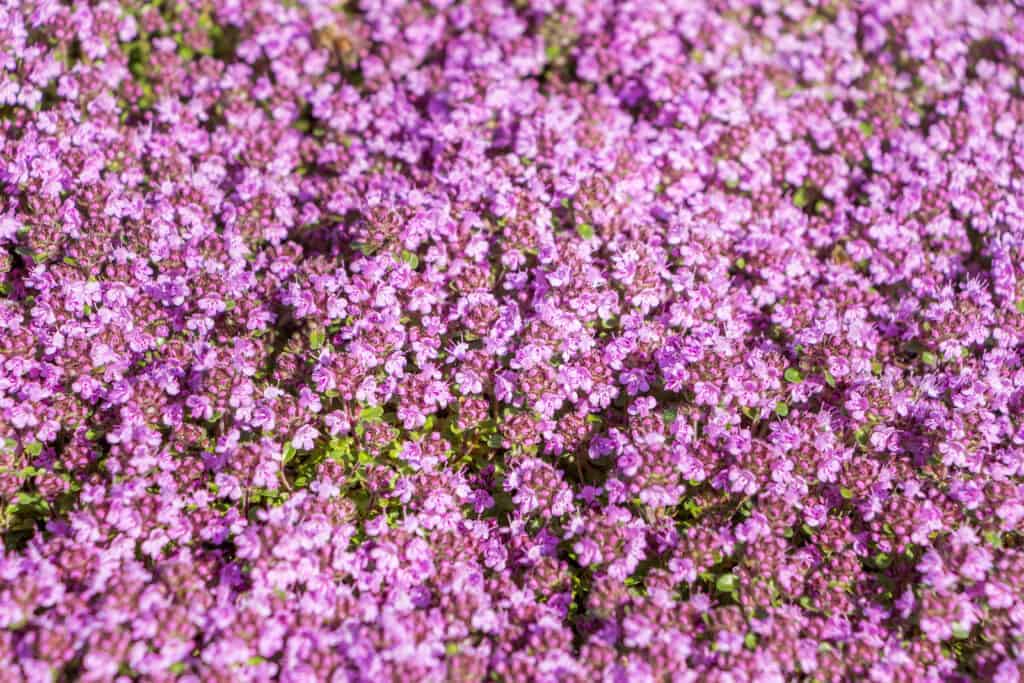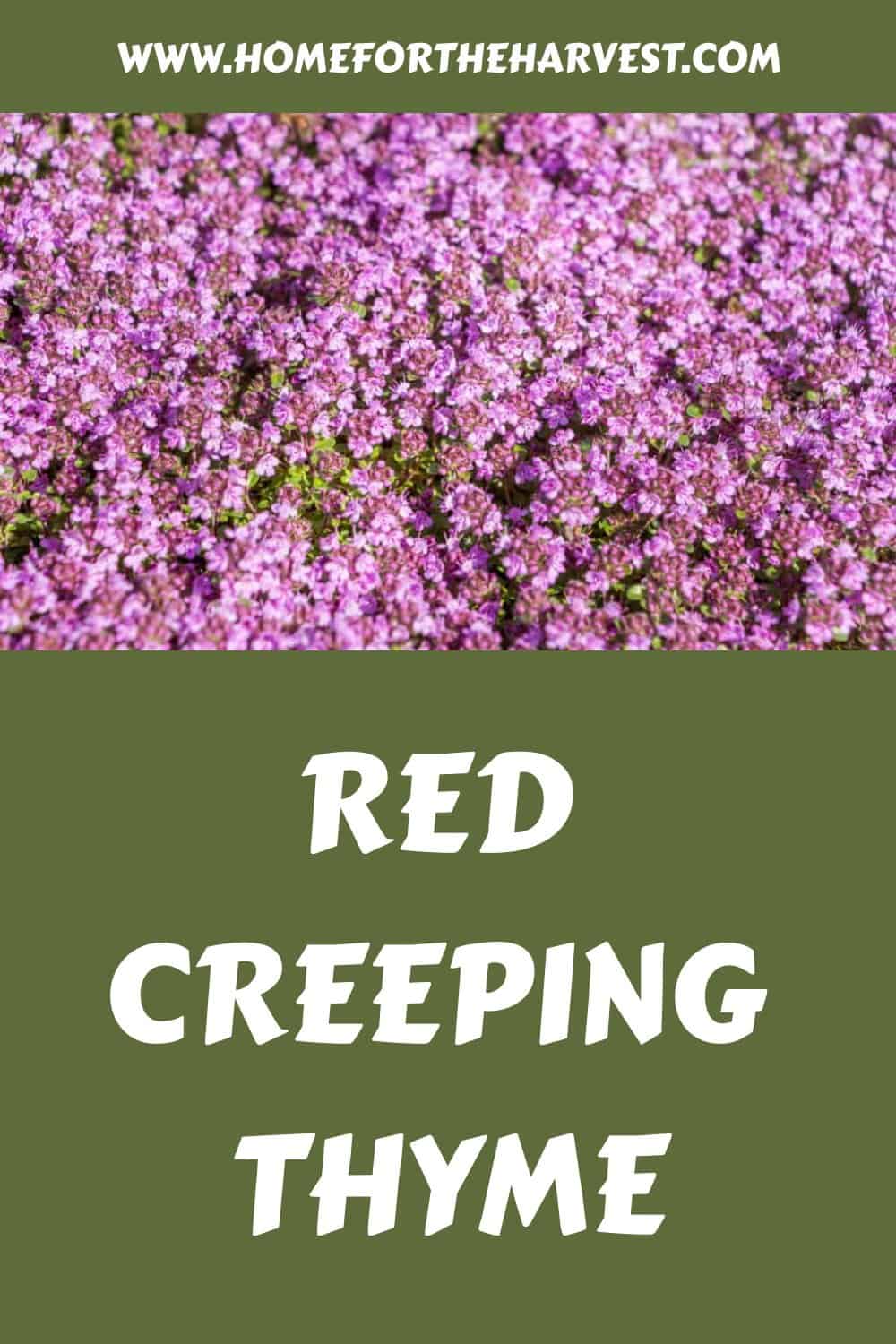Red creeping thyme, with its lovely shades of red and pink, can make an excellent ground cover for your yard and garden. But that’s not the only thing it offers. Let’s talk about thyme!
Red creeping thyme is a flowering perennial in the Thymus botanical genus that most often serves as a hardworking and low-maintenance ground cover. It blooms best during the summer months, and both its blossoms and its foliage are aromatic. Red creeping thyme is known for attracting butterflies and deterring deer. Both Thymus praecox (more commonly) and Thymus serpyllum (less commonly) are commonly referred to as red creeping thyme.
Want to know more? Read on for more info about how to grow and care for red creeping thyme. It just might be the plant you are looking for!
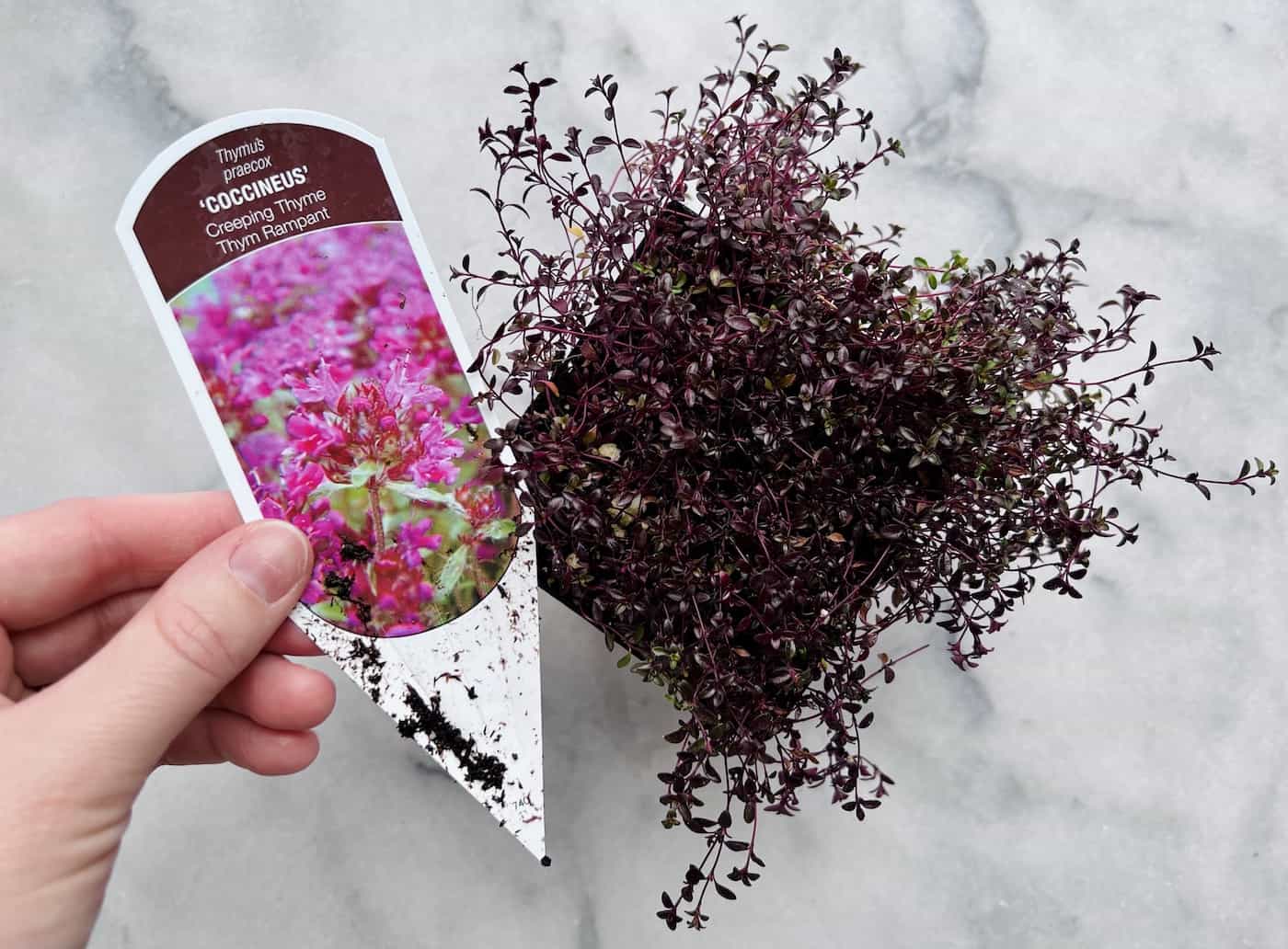
Red creeping thyme basics
Red creeping thyme is a low-growing perennial that is a commonly used ground cover. Some people even opt to completely replace their grass with this lovely, low-growing flora. This herbaceous blooms prolifically in the summertime and is known to boast beautiful, showy blossoms. As the name suggests, these blossoms are usually red, but they occasionally come in shades of purple and pink as well. Its foliage is usually dark, rich green.
Red creeping thyme is the common name for two closely-related species of thyme: Thymus praecox and Thymus serpyllum. Both of these thyme species are native to Europe, although the range of Thymus praecox extends west to Iceland and Greenland, while Thymus serpyllum extends east to West Siberia. In addition to being called “red creeping thyme”, Thymus praecox also has the common name “mother-of-thyme”, while Thymus serpyllum also has the common name “Breckland thyme”.
Red creeping thyme generally only grows to be about one to four inches tall, but it can often spread over a wide area of up to 24 inches or more. This thyme is known to be something of a slow grower. It usually takes about a year to really establish itself in the garden before it starts to blossom. Once it has been established, it will quickly start to spread in its second season.
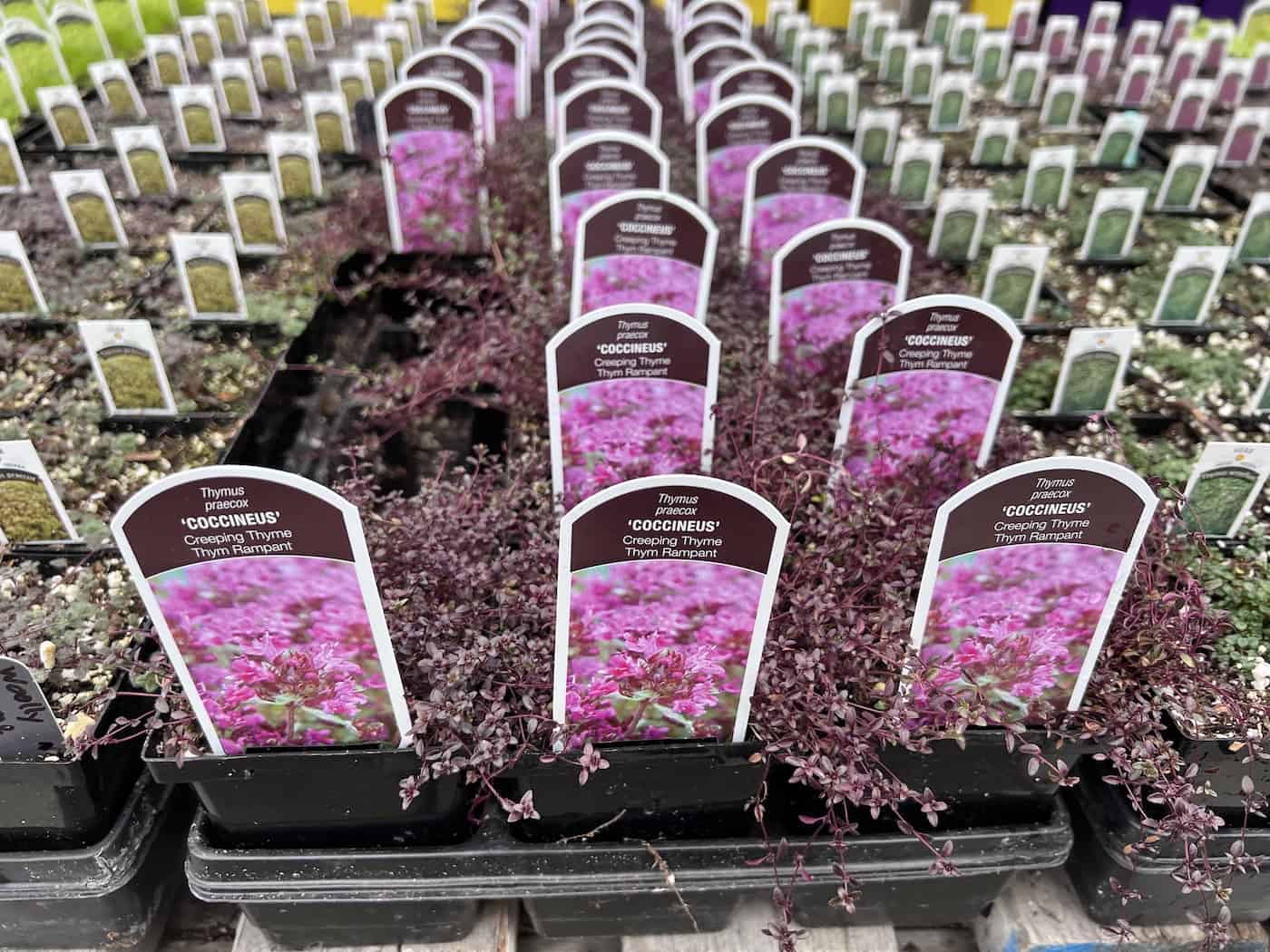
Popular types of red creeping thyme
Here are some popular types of red creeping thyme:
- Thymus praecox ‘Coccineus’ – the most popular “red creeping thyme”
- Thymus praecox articus (arctic creeping thyme) (culinary)
- Thymus praecox (wild thyme) (also called “mother of thyme”)
- Thymus serpyllum (purple creeping thyme)
Both Thymus praecox and Thymus serpyllum have the common name “red creeping thyme”, as one was previously classified as a subspecies of the other. Here are some other common names you may come across as you shop for plants.
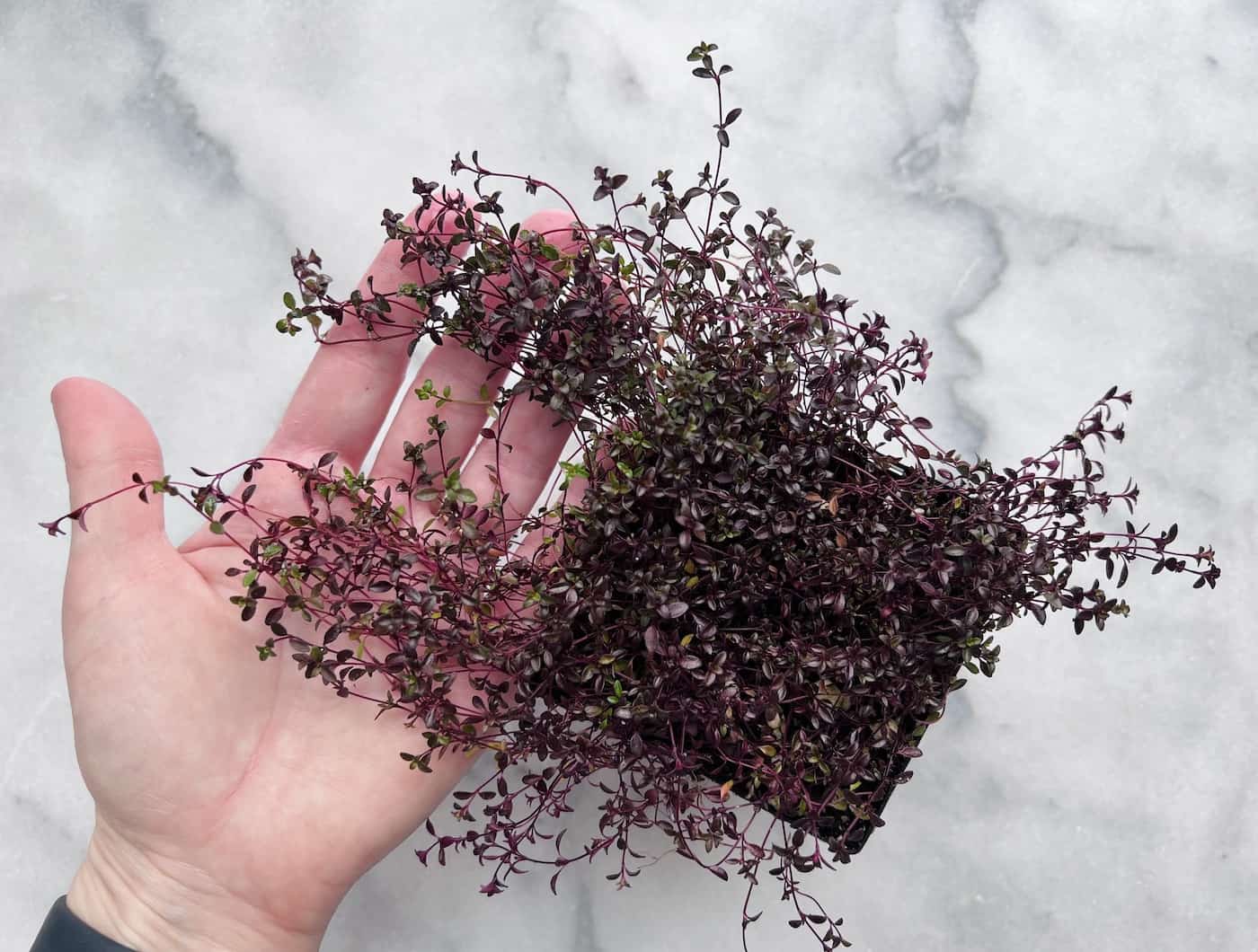
Thymus praecox
Thymus praecox has been noted to have the following common names:
- Red creeping thyme
- Creeping thyme
- Wild thyme
- Mother-of-thyme
- Precocious thyme
Thymus serpyllum
Thymus serpyllum has been noted to have the following common names:
- Red creeping thyme
- Creeping thyme
- Wild thyme
- Breckland thyme
- Elfin thyme
- Brush thyme
Landscaping with red creeping thyme
Not only is red creeping thyme a good ground cover for its beauty, but also its durability. It makes a great filler for in-between stepping stones because it can actually tolerate mild foot traffic without becoming damaged and dying. When its leaves are crushed, it lets off a particularly pleasant scent, making it twice as enjoyable to have in the garden. It can also be planted in mixed beds or pots, spilling over the side.
Red creeping thyme is extremely drought resistant, but it is also cold-resistant as well. The one thing you never want to do is overwater it. If you do not space out watering and let the soil dry out, your thyme could very well begin to develop root rot, which can sometimes be difficult to treat.
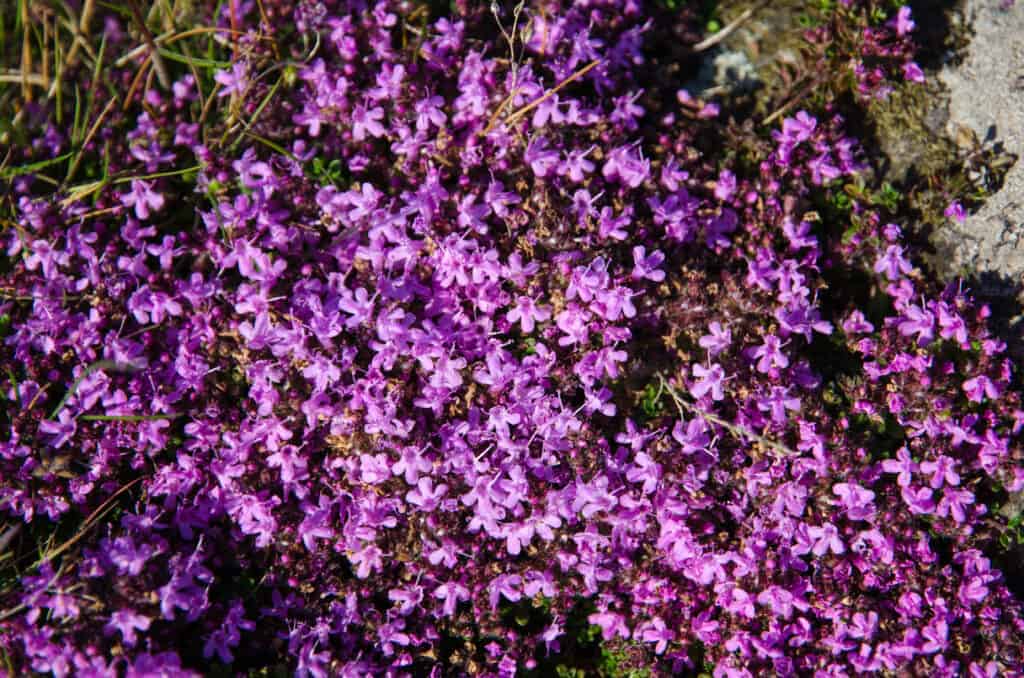
Growing conditions for red creeping thyme
Red creeping thyme is a fairly durable plant. When planted correctly and in the proper growing conditions, this perennial can prove to be pretty low maintenance. Your plants will do best if they are planted about 12-15 inches apart (closer spacing, however, sometimes allows plants to fill in faster). It usually grows best in fertile, well-draining sand or sandy loam.
While thyme can grow in partial shade conditions, it will most certainly not thrive in all shade conditions. It is usually kept happy in partial to full sunlight, so do not be afraid to plant it in a high sun exposure area. It will be the most productive in full sunlight conditions. As mentioned above, you should be careful not to overwater. As a general rule, you should wait until the top three inches of soil are completely dry before watering again. A couple of times a week should be sufficient to keep your red creeping thyme thriving and happy.
Though it is not always necessary, red creeping thyme will benefit greatly from the occasional application of fertilizer or well-balanced manure. You might consider applying it once every spring, though you can apply it more often if you feel your plant needs it. Additionally, it is a good idea to prune your thyme regularly. This can be done by pinching off the tips of the shoots. Doing so will encourage the plant to branch off somewhat.
Caring for red creeping thyme
Now that you know how to plant red creeping thyme, the next thing we need to cover is how to care for and maintain it. Here are some important tips you should know:
It is advisable to cut back your red creeping thyme plants at least twice per year. The first time you will want to do this is in early spring before the blooming starts up again. Cut back the old foliage to about 1/2 inch to make room for the new blossoms. It is also a good idea to slightly trim back the new growth. Red creeping thyme is pretty and nice to have around the yard but keep in mind that it does often spread rapidly. You can pull up or cut back any plants that have spread too far for your liking.
Before trimming and pruning, make sure to disinfect your shears. Why? If your shears have too much germ and bacteria buildup, it could start spreading disease among your plants, which could result in you having to start your garden all over. Does not sound like fun, does it? You can clean your shears by wiping the blades down with a disinfectant, such as Lysol or any other household cleaning product. You can also soak them in a 10 percent bleach solution, as long as you make sure to rinse the bleach off thoroughly. Failure to do so will result in the metal on your shears becoming corroded.

Pests and diseases
Red creeping thyme is surprisingly resistant to most pests and diseases, but it does, unfortunately, have a few weaknesses and problems you may want to know about. Firstly, there are the slugs. Slugs will be attracted to your thyme (usually in damp conditions). They will feed voraciously on the foliage of the thyme and will leave fairly large holes in the leaves. The best way you can keep slugs from destroying your ground cover is to keep the ground free of mulch and leaf litter.
You should keep your eyes open for slugs when you are out weeding or watering. If you happen to see any clinging to your red creeping thyme, pick them out and throw them away.
So, what happens if you have kept your flowerbed clean and free of mulch and leaves but you still have a slug problem? The best thing to try in this instance is spreading diatomaceous soil around your thyme. This soil will be scratchy and uncomfortable for slugs to slide across and should subsequently discourage them from invading your garden.
As mentioned above, red creeping thyme is generally resistant to most diseases. Two diseases do affect this thyme, however, and those are root rot and Alternaria blight.
Root rot, as we have established, occurs when the plant is overwatered and fungus starts to grow on the damp roots. Some telltale signs of this problem include the plants beginning to droop or the leaves turning yellow or brown and shriveling up.
Sadly, the only way to really solve the root rot problem is to pull up all the affected plants. Otherwise, the fungus will spread to the rest of the thyme, and even to other plants in your flowerbed. It is better to pull up only a few plants than to have to pull up the entire garden. If you get on the problem as soon as you notice it, it should not be difficult to stop it in its tracks.
Alternaria blight is a disease that occurs when red creeping thyme plants are planted too close together. This creates a humid micro-climate which then causes brown, black, or yellow rings and spots to appear on the leaves. It can also be spread through infected seeds. If it goes unattended for too long, holes might even form in the leaves, and eventually, they will droop and completely wither and die. This is another fungal issue that must be taken care of as soon as possible.
Just as with root rot, you will have to remove all the infected leaves/plants to keep the infection from spreading. If necessary, you may have to remove and replant the thyme farther apart. This will prevent humidity from getting to it badly and should keep it from getting sick again.
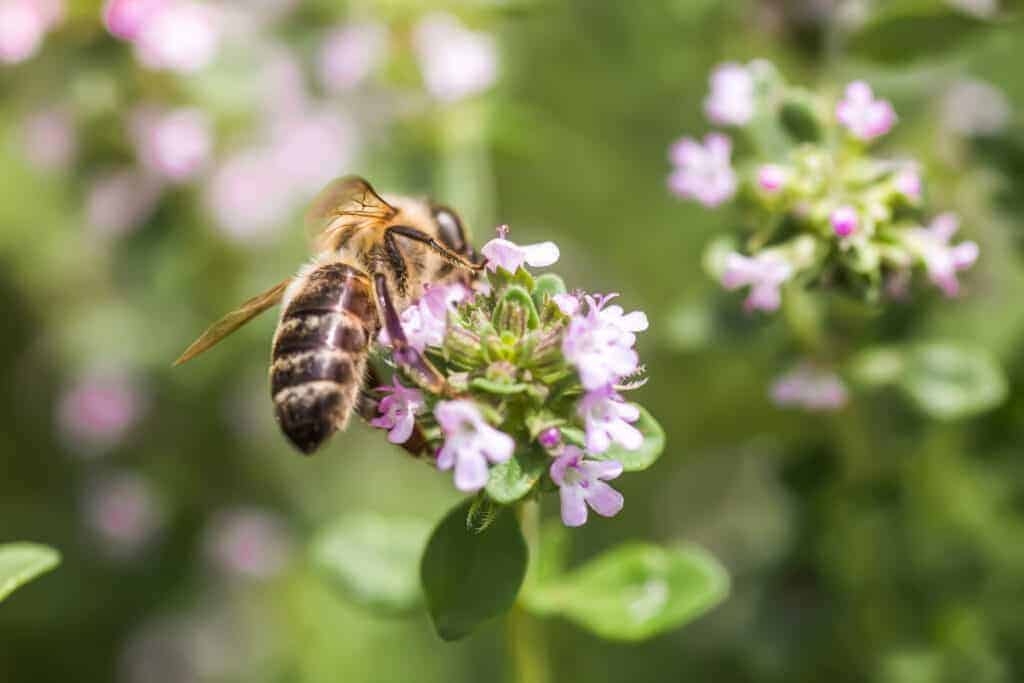
Pros and cons of red creeping thyme
Obviously, no plant is perfect, and red creeping thyme definitely has its own strengths and weaknesses. Fortunately, in this plant’s case, the pros far outweigh the cons, but there are still a few things you probably ought to consider.
Pros
As previously discussed, red creeping thyme makes an excellent ground cover, primarily because of its durability. Because it can withstand fair amounts of foot traffic, this makes it an ideal ground cover for families with lots of kids or even pets. It has proven to be fairly safe for animals such as cats and dogs, so you do not have to worry about your furry friends being poisoned by it.
Red creeping thyme tends to have more flowers than foliage during its peak blooms. This is a nice feature because it helps to break up the green. It is pleasant to have the ground covered in vibrant colors rather than just green. Additionally, red creeping thyme is a showy plant, but it will not steal the spotlight from the rest of your plants. Because it is so short, your thyme will complement your other plants rather than overshadowing and distracting from them.
Red creeping thyme is a major attractant for bees and butterflies. You should not be surprised to find a large number of bees buzzing around your garden, especially in the spring. This is not only beneficial for the thyme, however. Because it attracts bees so well, this also brings bees to the other plants in your garden. This will result in extra pollination and a happy and healthy flowerbed throughout the growing seasons.
While it does attract bees, creeping thyme does not attract rabbits and deer. As a matter of fact, it actually repels these intruders into your garden. This is, again, a benefit that your entire garden will likely enjoy. Because deer, rabbits, and other would-be pests are driven away from red creeping thyme, they are not likely to disturb the rest of your plants. You can consider red creeping thyme to be the protector of the flowerbed. Plus, it is a nice bonus that it gives off a pleasant aroma.
This is the case with most ground covers, but red creeping thyme tends to grow in a thick carpet, which makes it more difficult for weeds to germinate. This means there is rarely cause to weed your thyme patches simply because weeds cannot grow there. Once it is planted and established, red creeping thyme is remarkably easy to maintain. As long as it is watered and pruned properly, it does not take a lot of effort to keep it healthy.
Creeping thyme helps to conserve soil (also a common benefit of buying almost any kind of ground cover). It is an excellent choice to plant on slopes especially because it limits soil erosion and water loss. It also serves as an insulator for the ground because it keeps the soil warm in the winter and cools in the summer.
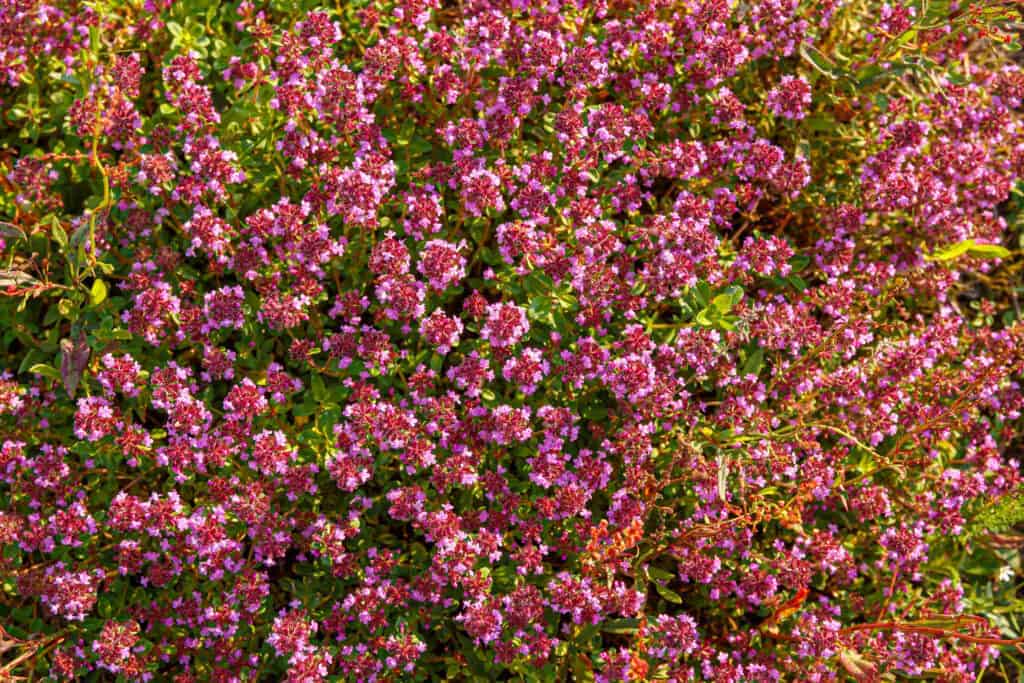
Cons
As mentioned before, the pros far outweigh the cons of having red creeping thyme, but there are a couple of cons you should probably think about before investing. Because it is short and close to the ground, snails, slugs, and, on occasion, snakes will hunker down into your thyme. This is very undesirable since snails and slugs especially will probably try to make their way into the rest of your garden.
Red creeping thyme tends to grow fairly quickly and that can be a good thing. The only downside is that because it grows and spreads so quickly, it can often overtake other areas of your garden, which might make it difficult for the other plants in the flowerbed to grow. It won’t choke them necessarily, but it will inhibit growth. Additionally, creeping thyme does often serve as a weed suppressant, but that is only the case after it has grown and completely established itself in your garden.
FAQs about red creeping thyme
Does red creeping thyme come back every year?
Yes, red creeping thyme is a perennial plant, meaning it comes back every year. Red creeping thyme can be grown as a perennial in Zones 4-8, where it usually reliably returns each spring. In climates with overly cold or hot temperatures, this plant may need to be replanted each year.
Is creeping thyme the same as thyme?
Culinary thyme (English thyme) is a different species of thyme than creeping thyme. There are several species of thyme referred to as “creeping thyme” among the 266 recognized species in the Thymus genus. While they can be used as herbs, we tend to use English thyme in cooking and creeping thyme in landscaping.


